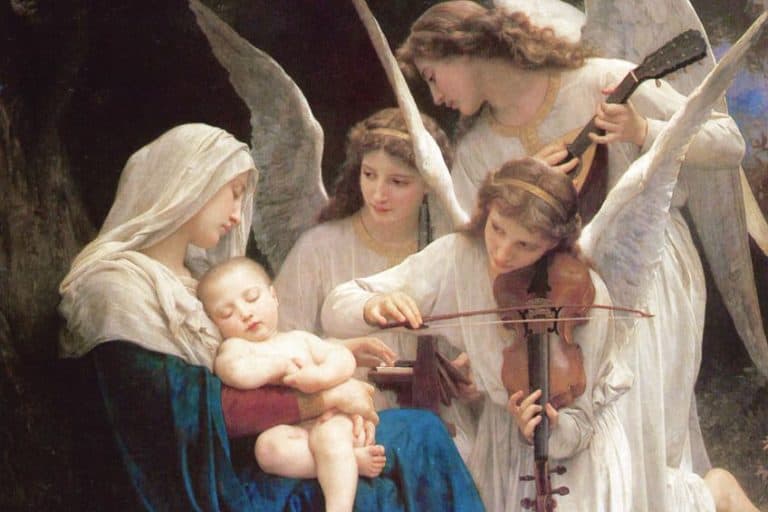“Bacchus” by Caravaggio – Analyzing the Famous Painting of Dionysus
Who is Bacchus and what is the painting of Bacchus meaning? Bacchus by Caravaggio, the Baroque master from Italy, was painted in 1596. In the Bacchus painting, the god, also known as Dionysus, is shown as a young man, sitting in a classical pose with vine leaves and grapes in his hair and his hand on the string of his lightly hanging robe. A dish of fruit and a huge carafe of red wine sits on a stone tabletop in front of him. He invites the observer to accompany him by holding out a small cup of the same wine.
Exploring Bacchus by Caravaggio
Bacchus, depicting a Greek God also known as Dionysus, was produced immediately after Caravaggio entered the office of Cardinal Del Monte, his first prominent patron, and represents the Cardinal’s educated circle’s humanist concerns. In 1596, Caravaggio went into the Palazzo Madama and stayed with him for five years. Del Monte was an art lover who commissioned many works from Caravaggio, including Medusa (1597-1598).
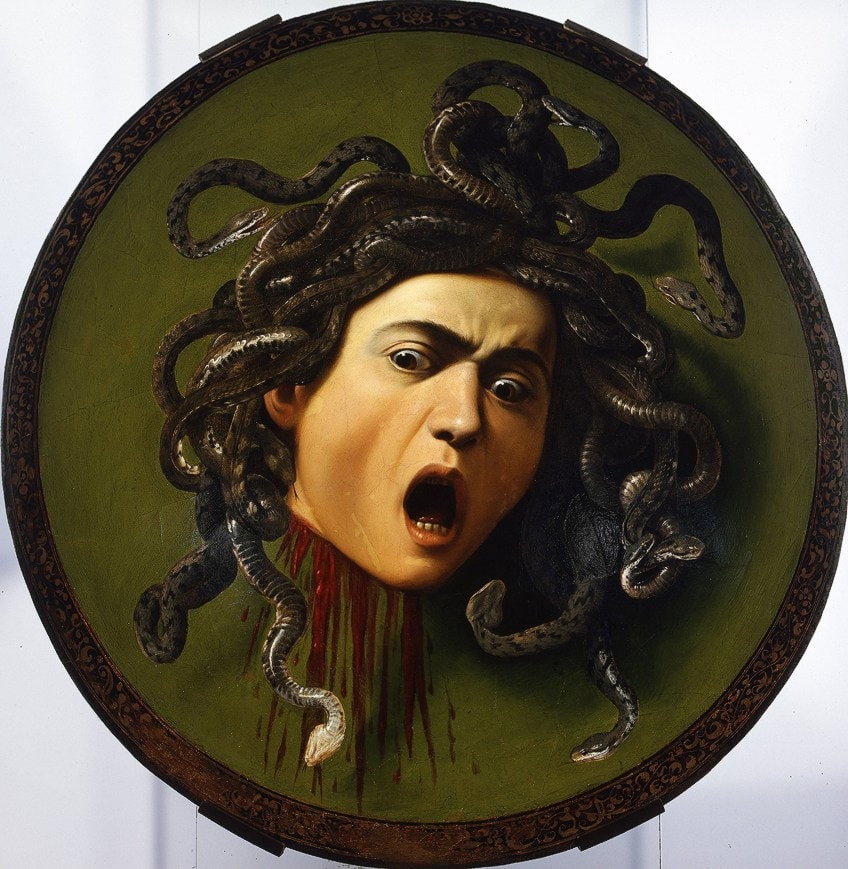
The cardinal was a big lover of Greek mythology and employed allegorical pictures to show off his artwork, music, and theater abilities. The cardinal gave both works to the Medici family, and they have stayed in Florence ever since.
Del Monte’s early assistance and mentoring helped Caravaggio achieve fortune and fame, making him one of his most influential benefactors.
An Introduction to the Artist Caravaggio
| Nationality | Italian |
| Date of Birth | 29 September 1571 |
| Date of Death | 18 July 1610 |
| Place of Birth | Milan, Italy |
Michelangelo Merisi da Caravaggio was a drunken brawler who was often in problems with the law. Fortunately for him, he was a fantastic painter. One of the greatest and most well-known for painting powerful, dramatic lighting settings. He had an impact on renowned artists such as Peter Paul Rubens and Rembrandt van Rijn.
However, he also had strong mood swings, indulged in a lot of drunkenness, and was prone to getting into confrontations.
Some speculate that this conduct was induced by lead poisoning from his paintings. However, competing artists of the period must have been subjected to lead paints as well, and there is no evidence that they were in any way self-destructive.
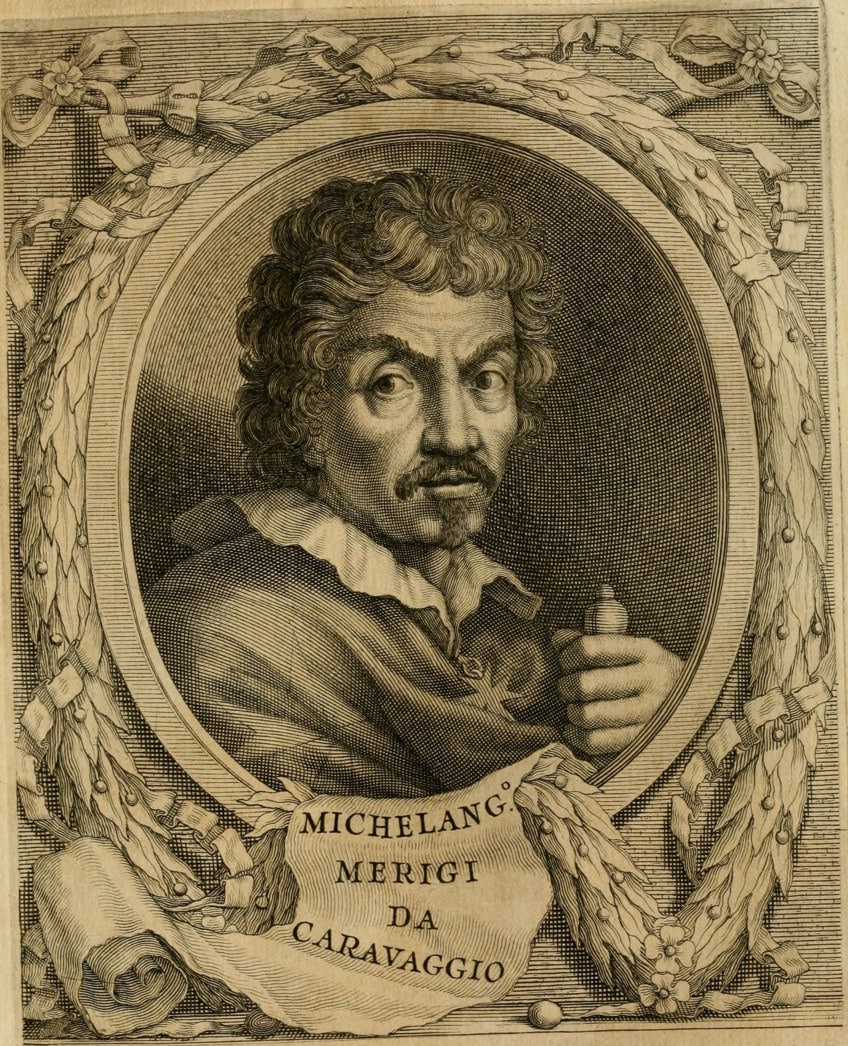
Caravaggio got into difficulty in his hometown for a variety of reasons, including hurling rocks at police officers, and fled to Rome at a young age. While there, he painted young, barely clothed men for Cardinal Francesca Maria Del Monte, a very homosexual man.
The Cardinal housed him in his Palazzo and shielded Caravaggio from the police. Caravaggio was bisexual, meaning that he also enjoyed women, particularly prostitutes, whom he employed as models. One day, he was playing tennis with fellow artist, Ranuccio Tomassoni. Caravaggio got into a fight with Tomassoni and ended up hitting him in the scrotum with his sword, leading Tomassoni to bleed out and die.
Because murder was a serious offense, a death warrant and a monetary reward were released, and Caravaggio escaped from Rome to Naples.
Anyone may murder him whenever they wanted and collect the bounty as long as they had Caravaggio’s skull as proof. For some time, Naples worked well, but Caravaggio was still concerned about the reward on his head and escaped to Malta. There, he created a few paintings and was awarded the rank of Knight of Malta, which absolved him of the pending death warrant. He was finally safe after years in exile, which lasted exactly one week until he got involved in another brawl in which a door was broken and a senior knight was gravely hurt.
He was arrested and stripped of his knighthood for being a “rude and nasty member.”
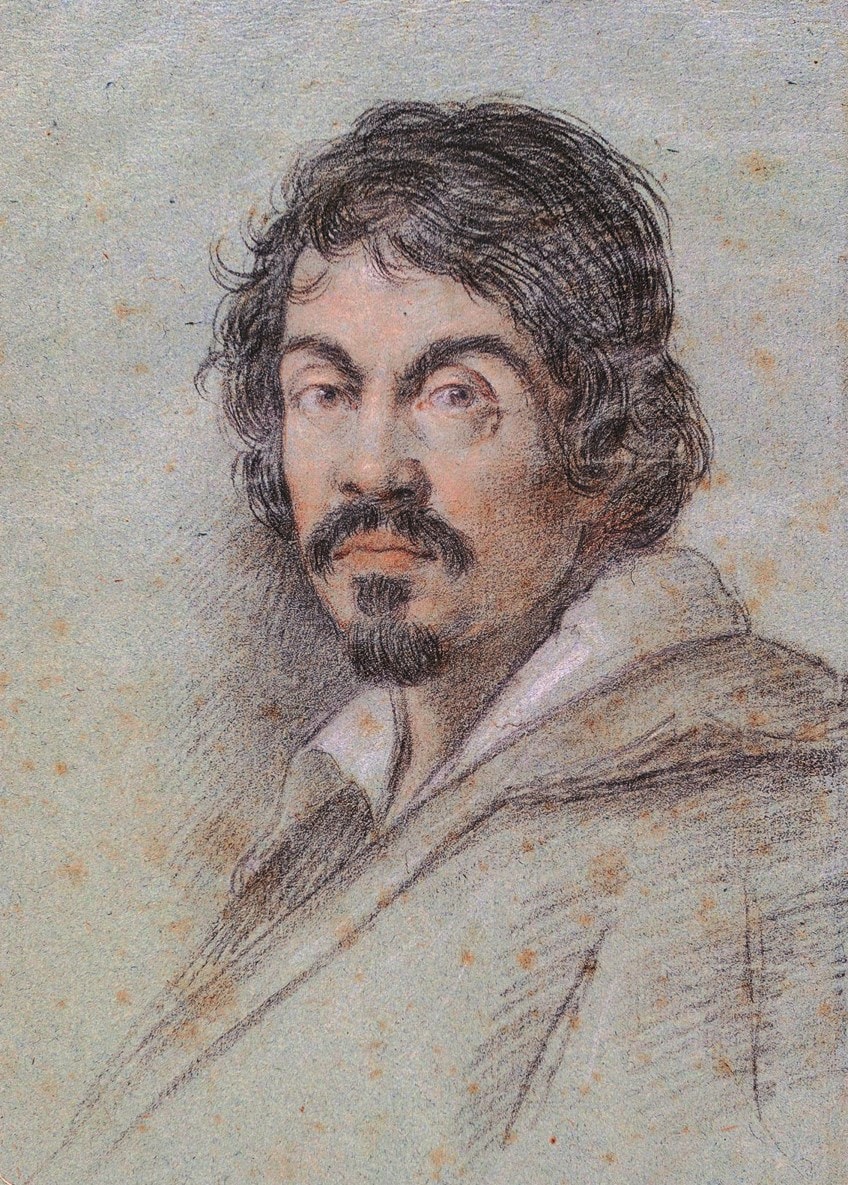
He fled from the Maltan Knight jail by climbing down a cliff on a rope and went to Sicily, where he wandered from place to place, always sleeping fully dressed with his weapon by his side. While on the run, he created many more works, including a couple for the Pope, which he promised in exchange for an amnesty for Tomassoni’s murder.
Caravaggio’s fortune ran out while the Pope was considering the amnesty, and he was assaulted and injured.
The attack may have been carried out by Tomassoni’s family, but the most plausible scenario is that the Knights of Malta were seeking vengeance. He developed a temperature as a result and perished three days before the amnesty was issued.
A Closer Look at the Bacchus Painting
| Date Completed | 1596 |
| Medium | Oil on canvas |
| Dimensions | 95 cm x 85 cm |
| Location | Uffizi, Florence |
Now, we shall explore the painting further by examining Bacchus’ meaning, subject matter, and interpretations. We will start by investigating the question “Who is Bacchus?” We will also be investigating who worked as the model for Bacchus by Caravaggio.
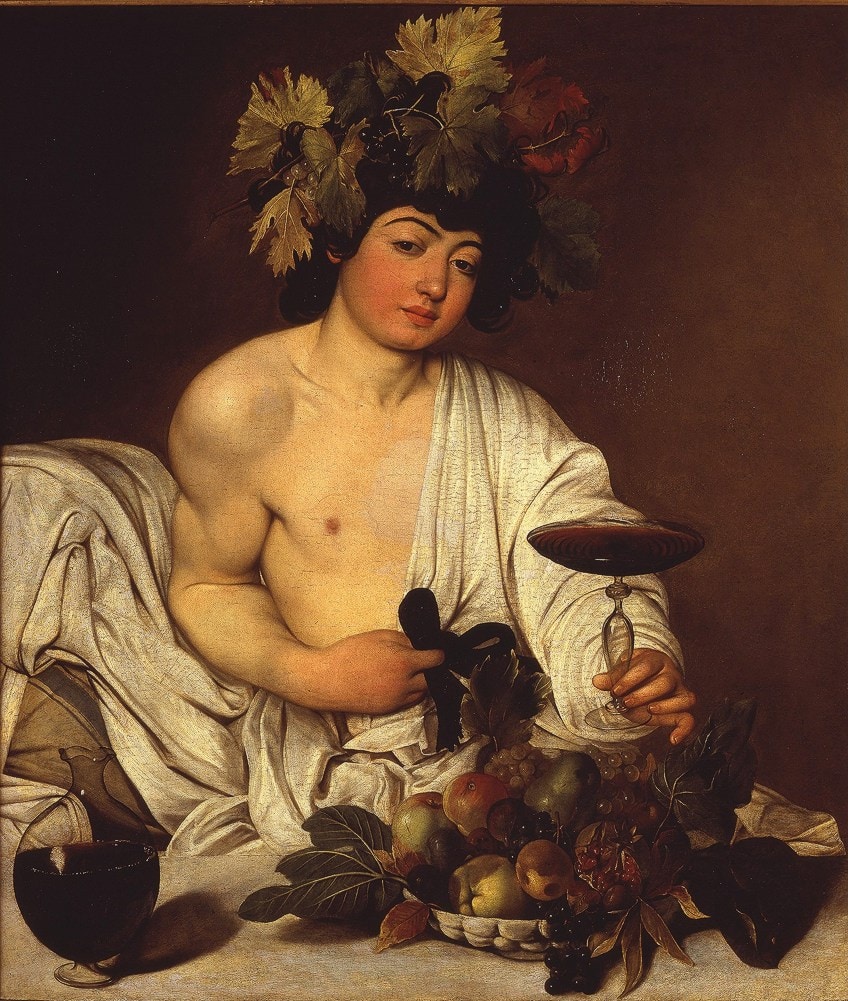
Subject Matter of the Bacchus Painting
Aristocrats’ private quarters were frequently decorated with scenes from Greek mythology. Classical pictures were utilized to represent the patron’s passions or victories. Bacchus may have been seen as the perfect symbol of luxury and excess by the patron, who enjoyed the better things in life.
In ancient Greek mythology and myth, Bacchus, also known as Dionysus, is the god of grapes, winemaking, reproduction, madness, religious ecstasy, ceremonial lunacy, festival, and theatre. The Romans eventually adopted this name.
His music, wine, and euphoric dancing liberate his fans from self-conscious anxiety and worry, and they disrupt the those of power’s restrictive limitations.
His scepter is both a benevolent device and a weapon used to slay those who resist his cult and the liberties he embodies. It is sometimes entwined with ivy and flowing with honey. Those who drink from his well are said to be seized and powered by the deity himself. His roots are unknown, and his cults took several forms; some are characterized as Thracian, while others are identified as Greek in ancient texts. As a deity of epiphany, his trait of “foreignness” as an incoming outsider-God may be intrinsic and important to his cults.
The wine was the earthly manifestation of Dionysus and was a religious center in his religion. Wine has the ability to alleviate pain, offer joy, and inspire heavenly lunacy.
The presentation of holy plays depicting Dionysus’ mythology was a driving force behind the creation of theater in Western civilization during Dionysus’ festivals. Dionysus’ worship is also known as a “cult of the souls,” since his maenads nourished the dead with blood sacrifices, and he serves as a heavenly communicator between the living and the dead. He is also said to be a god who dies and rises.
Bacchus was identified by Romans as their Free Father of the festival, benefactor of wine, and sexual function, and custodian of the customs, ritual practices, and liberties associated with awakening and citizenship. However, the Roman state regarded independent, famous Bacchus festivals as seditious, partially because their free blending of classes and genders broke conventional moral and social restrictions.
Except in toned-down versions and significantly decreased congregations permitted and overseen by the State, celebrating was deemed a death felony.
Interpretations
Caravaggio is depicting not just Bacchus, but also a little child costumed as Bacchus. It’s a seductive scenario that tempts the audience to give in to their carnal cravings. The lad is young and attractive, with a round yet strong body. With a provocative smile in his eye, he barely manages to keep his robes on as he coaxes the spectator to join him. There’s a bursting pomegranate in the basket, as well as a rotten apple.
Caravaggio combines these motifs to allude to the Vanitas idea that youth and pleasure are both short-lived. Everything is doomed to die and decay.
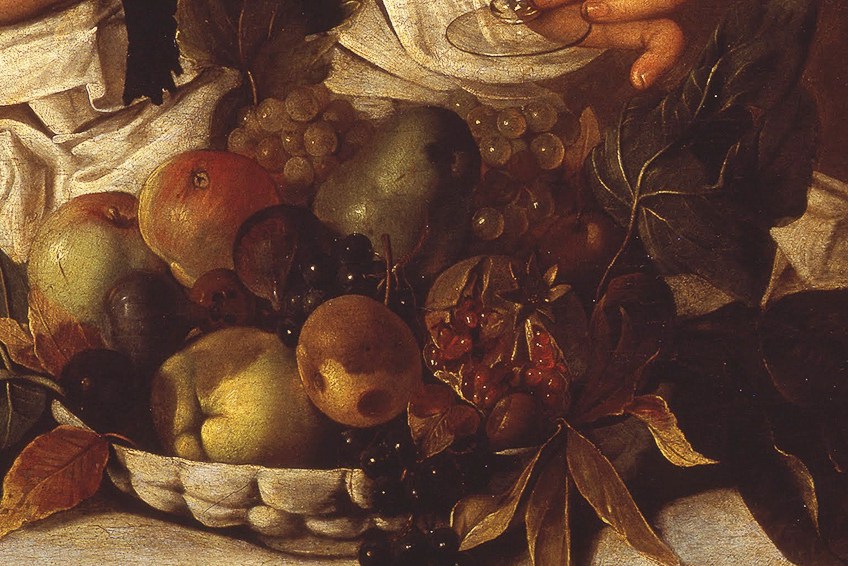
It’s also plausible that the decaying apple symbolizes fermentation, implying both that fermentation is physically rotted and that faulty fermentation procedures lead to the embodiment of rot. Caravaggio might be hinting at his own sexual sentiments toward the young model in the painting by the homoeroticism in the artwork. Having gay relations with young boys was not frowned upon in the 16th century. Many of Caravaggio’s customers and fellow painters ignored his misbehavior and actively supported his work despite it.
The homoeroticism of the artwork, according to art historian Donald Posner, was really referring to Cardinal Del Monte’s sensuality and his associations with the younger boys in his close circle.
Who Was the Model for Bacchus by Caravaggio?
Caravaggio’s student and lover, Mario Minniti, may have been the model for Bacchus, as he had used him as a model in numerous of his prior works. There was some suggestion that Caravaggio and Minniti had a sexual connection. It’s possible that the paintings he posed for had a homoerotic vibe.

With a goblet of wine and a basket of luscious fruits, the reclining figure, especially in Bacchus, invites the observer into the scene while his robe comes off. Caravaggio was noted for arranging scenarios, including the models, and portraying them in costume, eliminating the need for him to draw the scene from memory before putting it on canvas.
Caravaggio was said to have used himself as a model by certain critics, including Giovanni Baglione.

He would have been 24 years old in 1595, and he may have emphasized his youthful looks for this piece. Despite the evident exertion that this caused the model, Bacchus is seen providing the wine with his left hand. This has led to the theory that Caravaggio utilized a mirror to help him while working from life, obviating the necessity for sketching.
Caravaggio is said to have struggled to depict the human figure without a subject in front of him.

Criticism
Giovanni Baglione, a competitor of Caravaggio, felt that this depiction of Bacchus was actually a self-portrait. He claims that when painting the picture, Caravaggio had a mirror in front of him. Baglione is thought to be a member of the Caravaggisti, a group of painters and art lovers who admired Caravaggio’s work and strove to protect and even imitate it.
Despite the fact that Baglione admired Caravaggio’s technique, he despised him. He even authored a damning Caravaggio biography.
The two artists despised one other and were always accusing each other of immoral behavior. Baglione’s hate is supposed to have stemmed from jealousy, which led him to criticize Caravaggio for being incapable to paint portraits without a subject. Caravaggio, he argued, lacked the ability to conjure up ideal beings in his head and put them to paint.

Other Versions
Caravaggio painted another figure of Bacchus for the Borghese family, Young Sick Bacchus (1593). This portrait’s model is said to be the same as the one used in the Bacchus painting. Unlike the subsequent version, Bacchus’ complexion is discolored and his body is turned away from the observer in this version. It’s unknown if the subject is Caravaggio himself or his student, Mario Minniti.
Caravaggio’s fascination with tenebrism is evident in this rendition.
The background stays black while the subject appears to be illuminated, providing a dramatic effect that forces the viewer’s attention to one component of the image. Unlike subsequent depictions of Bacchus, this one concentrates on Bacchus’ own dissolution rather than the deterioration of decadence.

Caravaggio achieves a stunning lifelike representation of still life in this “Bacchus” painting. His representation of the god’s fruit basket and a cup of wine is unusual, with some commentators seeing these components as a Horatian appeal to austerity, sociability, and friendship. The sculpted figure of Bacchus, who has a startling face owing to inebriation, is based on models from classical art, particularly Antinous’ portraiture, and exudes a languid sensuality.
Frequently Asked Questions
Who Is Bacchus?
The god Bacchus is also commonly referred to as Dionysus, a nature deity of bounty and vegetation in Greco-Roman religion, notably recognized as a god of wine and pleasure. Because Dionysus was thought to embody the lifeblood of nature, he was honored with elaborate festal celebrations.
What Is the Subject Matter of the Bacchus Painting?
The private chambers of aristocrats were usually adorned with images from Greek mythology. To symbolize the patron’s passions or victories, classical paintings were used. Bacchus may have been viewed as the epitome of luxury and excess by patrons who appreciated the finer things in life. His music, wine, and joyous dancing free his supporters from self-conscious tension and stress, and they shatter those in power’s shackles.
Alicia du Plessis is a multidisciplinary writer. She completed her Bachelor of Arts degree, majoring in Art History and Classical Civilization, as well as two Honors, namely, in Art History and Education and Development, at the University of KwaZulu-Natal, South Africa. For her main Honors project in Art History, she explored perceptions of the San Bushmen’s identity and the concept of the “Other”. She has also looked at the use of photography in art and how it has been used to portray people’s lives.
Alicia’s other areas of interest in Art History include the process of writing about Art History and how to analyze paintings. Some of her favorite art movements include Impressionism and German Expressionism. She is yet to complete her Masters in Art History (she would like to do this abroad in Europe) having given it some time to first develop more professional experience with the interest to one day lecture it too.
Alicia has been working for artincontext.com since 2021 as an author and art history expert. She has specialized in painting analysis and is covering most of our painting analysis.
Learn more about Alicia du Plessis and the Art in Context Team.
Cite this Article
Alicia, du Plessis, ““Bacchus” by Caravaggio – Analyzing the Famous Painting of Dionysus.” Art in Context. June 14, 2022. URL: https://artincontext.org/bacchus-by-caravaggio/
du Plessis, A. (2022, 14 June). “Bacchus” by Caravaggio – Analyzing the Famous Painting of Dionysus. Art in Context. https://artincontext.org/bacchus-by-caravaggio/
du Plessis, Alicia. ““Bacchus” by Caravaggio – Analyzing the Famous Painting of Dionysus.” Art in Context, June 14, 2022. https://artincontext.org/bacchus-by-caravaggio/.





